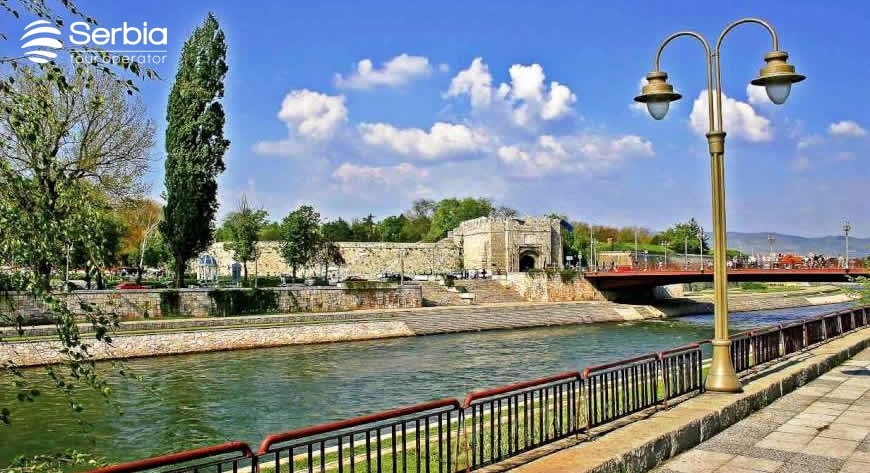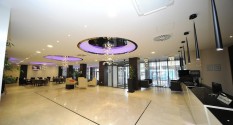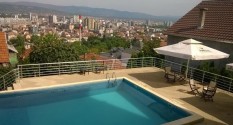Niš Fortress
Niš Fortress is located in the core of the city, on the bank of the Nišava River. It is one of the best preserved and most beautiful medieval fortresses in central Balkans. It was destroyed and restored a number of times, by Romans, over Byzantines, Slavs, Bulgarians, and Serbs. It’s got its final shape in 1723, when Turks built it, facing the end of their reign in this area. Its construction required over 40 stonecutters from Constantinople and around 400 bricklayers from Niš and around.
The Fortress covers 22 hectares, its walls are 2,100 meters long, 8 meters high, and 3 meters wide. From the outside, the Fortress was surrounded by a water-filled ditch, whose northern part remains visible today. Apart from the well preserved stone walls and gates, the Fortress exhibits numerous remains from the turbulent history of Niš:
One of the oldest remains is the collection of tombstones (Lapidarium, 1st-4th century). The collection is located in front of Historical Archives building and contains 41 tombstones found in the Fortress, but also some originating from the nearby towns of Jelašnica, Svrljig and Knjaževac.
An antique street near Lapidarium and the remains of thermae to the left of the entrance plateau as well as early-Byzantine streets in the Fortress (next to Bali-Bey Mosque) originate from the Byzantine restoration of 5th and 6th centuries.
Hamam, the gorgeous Turkish steam bath, is the oldest preserved facility from the period of Ottoman reign in Niš and one of the rare fully preserved facilities of this type in general. The bath was made near the Istanbul Gate in 1498, the endowment of Mehmet Bey. Made of brick and stone as a single room Turkish bath, it was intended only for men or only for women.
Arsenal, a weapons and ammunition depot, located to the right of the Istanbul Gate was used for the storage, repair and manufacture of military materials. From to the Turkish inscription on the plate next to the entrance we know that the arsenal was built in 1857 during the reign of Sultan Abdul Mejid. Since its restoration in 1972, this building has been used as an art gallery.
Bali-Bey Mosque was first mentioned in the Turkish inventory of 1521-1523, when it was probably built. It was listed as a masjid (a small Turkish shrine without a minaret). The mosque was the endowment of Bali-Bey from Edirne, a high ranking Turkish civil servant. The facility is today used as the “Salon 77” art gallery.
Powder Storages are military facilities used for the storage of gunpowder and ammunition. Five remain preserved, 4 located along the northern rampart, while another small one is situated in the eastern part of the Fortress. The rectangular space within is surrounded by a massive wall, over one meter thick, and it was used for storing powder and ammunition. The narrow hall surrounding it was occupied by soldiers in case of an attack. They could use 12 narrow slits in the walls (loop holes) to shoot and defend the city. The powder storages were constructed after 1723, when the building of the Fortress was fully finished. They are the only facility of this kind preserved in Serbia.
Prince Milan Obrenović and Niš Liberators Monument (1878) is located to the left of the main entrance, on a lot surrounded by chained columns. On the top of these columns, there are metal balls which were used as cannon balls during the liberation of Niš. This monument – a rifle bullet – was made by an Italian craftsman Vicenco Kaliterna (the creator of famous Niš drinking fountain in Čair) 1902, on the 25th anniversary of the liberation of Niš from the Turks and the first anniversary of Prince Milan Obrenović’s death.
Prison is preserved in the eastern part of the Fortress, where administrative and military buildings were located. The prison was made in the early 18th century and also had torture chambers. After the liberation from the Turks, the building was used in the same purpose.
Historical Archives Building, located in the northwestern part of the Fortress, is the only military facility there made after the liberation from the Turks (in 1890). During the war, the building was used in various purposes: the Cartographic Section of the Serbian Army, the Noncommissioned Officers’ School of Artillery and the Bulgarian prison in World War One. In 1959 it was proclaimed a cultural monument and has been used as a Historical Archives building since. The quantity and importance of the material preserved there makes it the second such institution in Serbia, second only to the Belgrade Archives.




